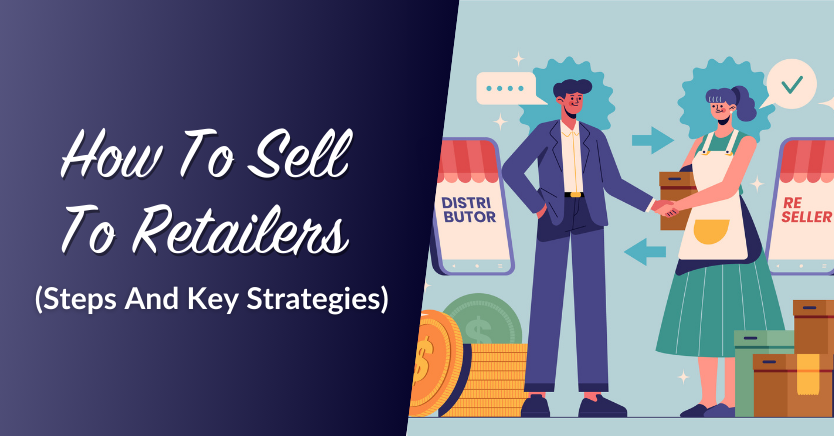
Learning how to sell to retailers is a great skill for wholesale distributors to have in their tool belts. Whether you sell your products primarily online or if you just want to expand your reach, selling to retailers is a fantastic way to boost revenue, create brand awareness, and build the kind of network connections that you need to be successful in growing a wholesale distribution business.
In this article, we’ll dive into how you can do this and provide actionable strategies to help you get your products into retail stores. Let’s get right into it!
Understanding How Retailers Work
When learning how to sell to retailers, it’s important to understand how they work and what they value. There are key differences between retailers and other non-retail wholesale customers:
- Higher Costs: Retail stores have bigger overheads due to costs like rent, sales staff, fixtures, signage, furnishings, and more
- Startup Costs: The cost to start a retail store is at least 5-10x higher than online-only retailers
- Inventory Management: Retail stores generally hold more stock on hand
- Organized Procurement: The larger the retail chain the more organized their procurement will be
- Product Looks: How a product looks is very important in retail.
- Smaller Profits: The margins are thinner in retail.
- Foot Traffic: Foot traffic and profit per square meter are important figures to monitor in retail stores
By looking at their differences you begin to understand how selling to retailers can be a whole different ball game than selling to other businesses with lower overheads and complexity.
The retail model, while it looks simple on paper, is full of hidden costs that affect how much they can afford to pay for goods and what kinds of markups they’re looking for in a retail situation.
How To Sell To Retailers And Get Your Products In Stores (7 Key Steps)
As we’ve discovered, learning how to sell to retailers is different compared to selling directly to wholesale customers. Therefore, it’s important to plan ahead and prepare before you approach retail stores to maximize your chances. Let’s walk through how you can do this below:
1. Understand what makes your products unique
What are the unique selling points (USPs) of your product? By understanding what makes your products stand out from the competition, it’ll be a lot easier to communicate their value to retailers. This will also help you create a compelling pitch (more on this in the next step) and instill confidence in your offerings.
Here are some key aspects to consider:
- Unique features: Do you use unique ingredients or materials in your products?
- Target market: Who are your products for and why does it appeal to your market? For example, are you serving specialty niches like eco-conscious or vegan consumers?
- Competitive edge: What do your products offer that competitors don’t? This may be a lower price point, stellar customer support, exclusive features and more.
2. Perfect your pitch
Learning how to create a good sales pitch is important when learning how to sell to retailers. Having a well-crafted sales pitch can help you persuade retailers to buy and stock your product in their stores. Your presentation should capture attention and highlight the benefits of your offerings. Consider the following tips when crafting your pitch:
- Grab attention: Start with a compelling statement to grab attention, whether it’s a fact, testimonial, or even your unique brand story.
- Focus on the benefits: Emphasize the benefits and what makes your product unique.
- Present data or metrics: One of the most effective ways to convince retailers to buy your products is by demonstrating their impact–think sales figures, customer testimonials, or growth rates.
- Avoid jargon: Use simple and clear language to ensure your messaging is easily understood.
- Anticipate questions: Think about the possible questions retailers might ask beforehand and prepare concise answers.
3. Demonstrate and sell in person
Now that you’ve prepared your pitch, it’s time to find actual retailers that you can sell to! If you’re just starting out, it’s often beneficial to start small and local. Begin by identifying local retailers that sell products similar to your offerings or cater to your target market. Once you have your list, you’ll want to visit their stores.
In-person visits have a number of benefits:
- You can demonstrate the product
- They can feel the product and use it
- People find it harder to say no when you’re standing right there
Being able to demonstrate your product to a store owner means they get to feel the product, see it in action, hear about how it can help them and their customers and you can answer any questions and objections straight away.
4. Go after the big retailers using the top-down approach
For large groups of retail stores or retail chains, you will need to approach the head office of the group directly. Often these chains will have group procurement, so it’s a matter of finding out how their internal structure is set up and who you would need to talk to.
Getting in touch with the right people might be tricky, but you can often start at the store level by talking to a store manager and asking lots of questions. 9 times out of 10, you will get the details you need directly from them. However, if it’s proving tricky, you can use LinkedIn to locate the exact person you should be speaking to.
Simply go to the LinkedIn homepage and search for the company group by name and you can click on the People tab in the search results:
If you’re not sure what the group company is called they often list it in the footer on the retail store’s website. You can then plug that company name into LinkedIn and find the connections you need.
Conducting research like this is important because you need to be sure you are talking to the decision-makers.
Schedule appointments ahead of time and make sure you are well-prepared for the meeting. Take along products for demonstration and free samples and give them everything they need to know to make a decision.
5. Send direct mails
Using direct mail is a scalable way you can attract retail stores as wholesale customers.
If you write an introduction letter to retail buyers along with sending them a sample of your product, you are sure to get their attention.
It’s a process often called “Lumpy Mail” – the theory is that if you send the right person something that looks odd-shaped in the mail, and if that parcel is personally addressed, it will be more likely to be opened and considered.
Manufacturers have used the free sample approach to distributors for years and you can adapt it to your level as well. By sending a free sample you are giving them something tactile that they can feel and use which is better than just looking at pictures and videos.
When accompanied by a written introduction letter to retail buyers that is personalized to them, it can be a very powerful way to generate leads at scale.
To make direct mail successful for your business follow these three rules:
- Research & personalize – direct mail works best when you personalize it to the recipient
- Send daily – consistency is key if you want a good lead flow
- Follow-up – always follow up with a phone call a few days after you know the parcel was delivered
Sample Letter To Retail Buyer
If you are going to write an introduction letter to retail buyers it might help to start with a sample letter.
I thought I’d give you a sample letter to a retail buyer that you can actually use right away. Just print it off on your letterhead and include it with a sample of your product and a product sales sheet (more on that in a moment).
In this short introduction letter, we get straight to the point of introducing who we are and what we do, then tell them why we’re writing to them.
You must be succinct and clear about this – as with any marketing activity you only have a few seconds to grab and hold their attention.
[SUBJECT LINE]
Suggestions:
– ARE YOU THE RIGHT PERSON TO SPEAK WITH?
– I FOUND YOU THROUGH [NAME]
– REGARDING [X] PRODUCTS
Hi [PROSPECT NAME],
I’m [YOUR NAME] a co-founder at [YOUR COMPANY], we’re in the [NICHE] space. We make [XYZ PRODUCTS].
Just wanted to send you a free sample so you could get to know our product, [SPECIFIC PRODUCT] and see if [PROSPECT COMPANY] might be interested in stocking it.
I’ve also included a product sales sheet containing some more information about the product and our company for your review.
You can also see a video of it in action here: [SHORTENED URL] (optional line)
Is this something your customers would be interested in?
You can reach me directly at [MOBILE PHONE NUMBER] or [EMAIL ADDRESS].
Regards,
[YOUR NAME]
[YOUR COMPANY]
6. Attend trade shows
Trade shows offer opportunities to showcase your offerings and network with potential retail partners. This step entails an investment of time, effort, and resources, so it’s crucial to choose the most relevant events for your industry. Take the time your time to research–make sure the event aligns with your niche and business goals. In the beginning, you might want to focus on local or nearby trade shows before looking into national events.
When participating in trade shows, make sure to have a system in place to collect contact information of interested retailers. The key is following up! After the show, make sure to send personalized emails using GetResponse or give your leads a call. This will help you stay top of mind, and allow you to answer additional questions they may have about your offerings.
7. Join online marketplaces
As you continue to grow your business, you’ll want to maximize your reach and connect with more retailers. One of the most effective ways to do this is by joining wholesale marketplaces–these platforms allow you to showcase your offerings to a wider range of buyers. Some of the most popular platforms include Faire, Alibaba, Amazon, and DHGate.
Buyers in wholesale marketplaces use search to find the right suppliers, so make sure you optimize your seller profile and product listings to make it easier for them to find you. Provide detailed product descriptions, including specifications, benefits, and features.
4 Key Tips On How To Sell To Retailers
Unless you’re an experienced sales rep, knowing exactly how to sell to retailers and pitch your might seem a bit daunting. And, to be honest, it’s probably going to be something you learn on the job. Here are some simple yet effective strategies to get you started:
1. Include a great product demonstration
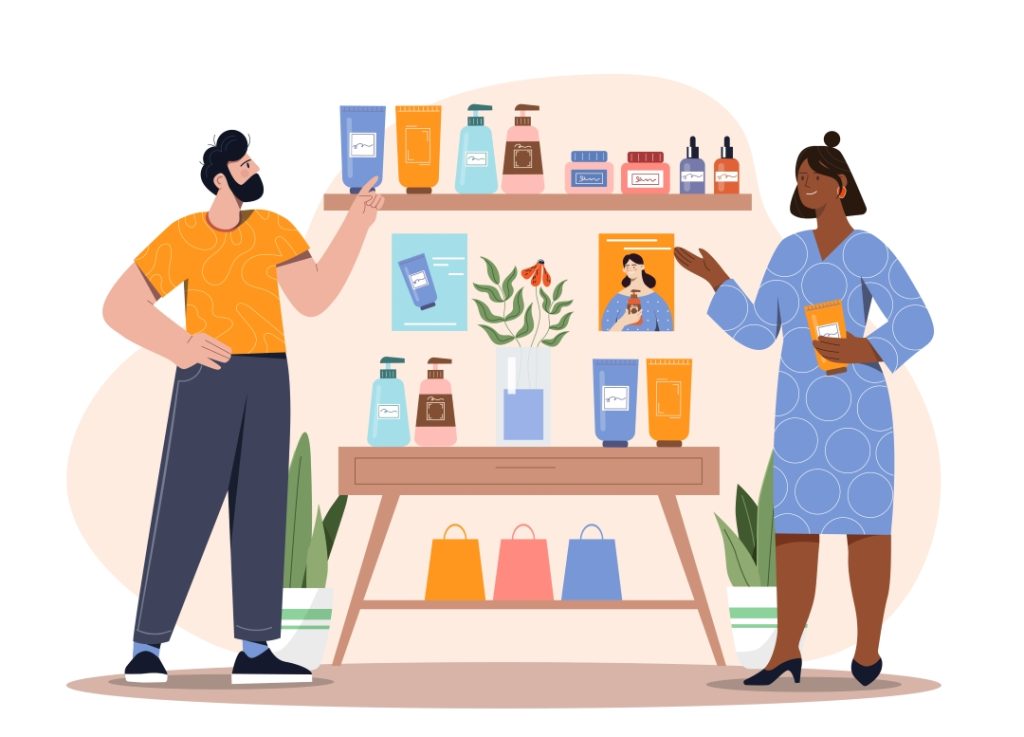
Demonstrating a product is incredibly powerful. Inc.com put together a great article on how to give a great product demo. I recommend you read the full article but here are the important highlights:
- Customize your demonstration to them – every customer is different so do your research
- Tell a story – people relate better if you involve the product in a story
- Rehearse – good sales reps prepare and rehearse the delivery multiple times
- Test everything beforehand – if your product has the possibility of breaking down, make sure you test it’s all working before you walk in the door
- Close the deal – asking is something a lot of people forget to do, the best time to ask for the sale is right after the demo
2. Use a product sell sheet
A product sell sheet tells your customer the key benefits of the product along with details on how to order. When creating a product sell sheet, make sure to:
- Highlight the benefits: Tell the person what benefits your products give customers rather than just listing the facts and features of your product.
- Keep it concise: Use bullet points, shorter paragraphs, subheads, customer quotes and call-out sections to break up the text and give some life to your design.
- Add a call-to-action: Make a special callout box just for your call-to-action. It should draw the eye immediately. Make it another color, bold the text, give it space, whatever you have to do to draw the eye.
3. Consider pricing
We’ve discovered what stores value in the first part of this guide on how to sell to retailers, and pricing is a key consideration. Therefore, you’ll need to offer competitive pricing to retailers if you want to convince them to stock your product. However, this shouldn’t come at a cost to your profitability.
Thankfully, you can use formulas like cost-based pricing or value-based pricing to come up with the right price for your products. We offer a free wholesale pricing calculator that can help you determine the best pricing strategy for your business, which you can check out below:
4. Build a good relationship with your retailers
The work doesn’t end after you successfully convince retailers to stock your product. If you want to keep them coming back, you’ll need to put in the effort to improve the relationship. This boils down to good (and regular) communication and quick issue resolution.
Stay in touch with retailers by scheduling regular check-ins, whether through phone calls, emails, or store visits. Address any concerns that arise promptly–this shows your reliability as a business partner and fosters trust.
5. Offer exclusive deals or promotions
Retailers are always looking for ways to stand out, and special deals or promotions are a great way to make your product more appealing. Offering exclusive deals can catch their attention and encourage them to stock your product. Consider giving special pricing for new retailers, so they feel confident about trying out your product.
You may also read: Top 6 Holiday Promotions To Offer Wholesale Customers This Year.
You can also offer discounts for bulk orders, which is often something retailers look for when deciding which products to carry. When learning how to sell to retailers, these types of incentives can help make your product a more attractive option for them.
6. Show proof of demand
One of the best ways to convince a retailer to stock your product is by showing that other people already want it. Retailers will feel more comfortable buying your product if they know there’s a demand for it. Share customer testimonials or positive reviews that show how your product has helped others. If possible, provide data or sales numbers that demonstrate how popular your product is.
Mentioning other stores that are already selling your product can also be a great way to show that it’s in demand. If you’re trying to figure out how to sell to retailers, showing proof of demand can be a key factor in getting them on board.
7. Make ordering easy
Retailers are busy, and they don’t want to waste time figuring out how to place orders. To make their job easier, ensure your order management is quick and simple. Offer online ordering to save time for both you and the retailer. Make sure to provide clear instructions on how to place orders, and always be ready to offer support if they need help.
To provide this support instantly, many modern wholesalers equip their sites with the best WordPress chatbot plugin to answer questions about account setup, bulk pricing, and order status 24/7.
By making the process as easy as possible, you increase the chances of the retailer coming back to you for more orders. When learning how to sell to retailers, streamlining the ordering process is one of the easiest ways to keep retailers happy.
8. Automate invoices and payments
Managing invoices and payments can be a hassle, but automating the process can make it much easier for both you and the retailer. With an automated system, you can send invoices quickly and track payments efficiently, saving you time and reducing mistakes. This also helps retailers by making the payment process clear and simple.
Invoices that are easy to manage can improve the overall experience and build trust. If you’re looking for tips on how to sell to retailers, automating invoices and payments can keep everything running smoothly and ensure you get paid on time.
Have an additional read about invoicing here: What Is B2B Invoicing? (A Simple Guide For Beginners).
Frequently Asked Questions
How can I sell my products to retailers?
Begin by understanding what makes your products unique, then perfect your pitch from there. Once you have a pitch prepared, begin researching potential retailers you can visit. It’s best to start small by approaching local businesses. Other ways to find potential buyers include attending industry trade shows and joining online marketplaces.
How to pitch to retail stores?
Focus on communicating the benefits of your offerings and provide evidence about the success or impact of your products. This can be customer testimonials, social proof, or sales data. Be prepared to answer questions and always close with a clear call to action.
Who sells directly to retailers?
Manufacturers, wholesalers, and distributors commonly sell directly to retailers. These businesses produce or source products and then sell them in bulk to retail stores, which then distribute the products to end consumers.
Can a business be both a wholesaler and a retailer?
You definitely can run your business as both a wholesaler and a retailer. This just means that you sell to both consumers and other retail businesses. It’s a very smart thing to do as it expands your reach in the market further than if you were just a retailer yourself. Think of it as creating a team of people to expand the reach of your products.
We built Wholesale Suite around this very premise. It enables businesses that are traditionally only selling to retail customers to expand their business into wholesale sales by adding those features to their existing WooCommerce store.
Describe the process a retailer uses to sell products and make a profit.
A retailer buys products and sells them to customers for a profit. Here’s how the process works:
First, the retailer buys products from suppliers or manufacturers. After that, they set up a way to sell their product. This can be in a physical store or online. Retail stores, whether big or small, help them show the products to customers.
Next, the retailer uses selling techniques to make the customer want to buy. This might include things like offering discounts, showing off popular items, or making the store look nice. Some stores also use selling tips, like helping customers find what they need quickly or offering great customer service.
For a small business, making a profit is important. After selling the products, the retailer gets back more money than they spent on buying the items. The difference is their profit, which helps the small business grow.
So, the retailer buys products, uses good selling techniques, and makes a profit by selling those products to customers.
Conclusion
Learning how to sell to retailers is crucial for the growth of your wholesale business, especially in the beginning. It’s a powerful way to generate brand exposure and expand your market reach to local audiences. In this comprehensive guide, we explored seven key steps on how you can make this happen:
- Understand what makes your products unique
- Perfect your pitch
- Demonstrate and sell in person
- Go after the big retailers
- Send direct mails
- Attend trade shows
- Join online marketplaces
We hope this article helped you out. Do you have any questions about this topic? Let us know in the comments section below!

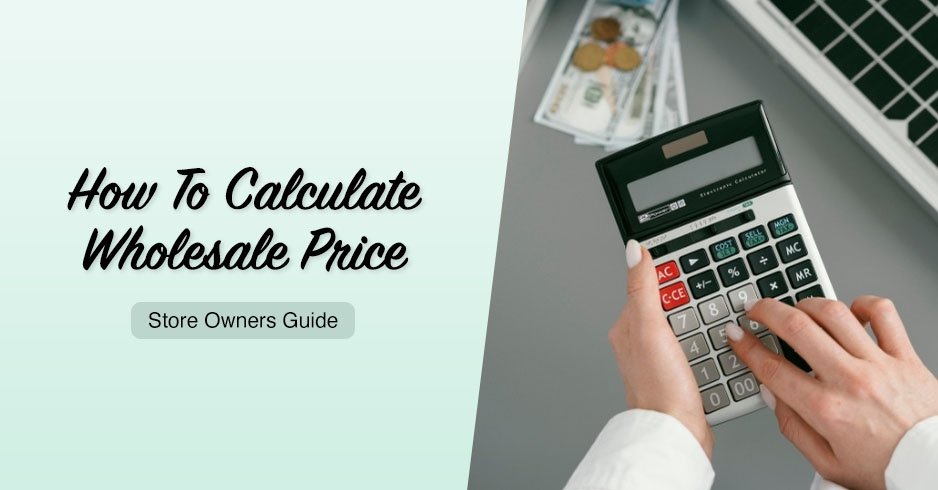
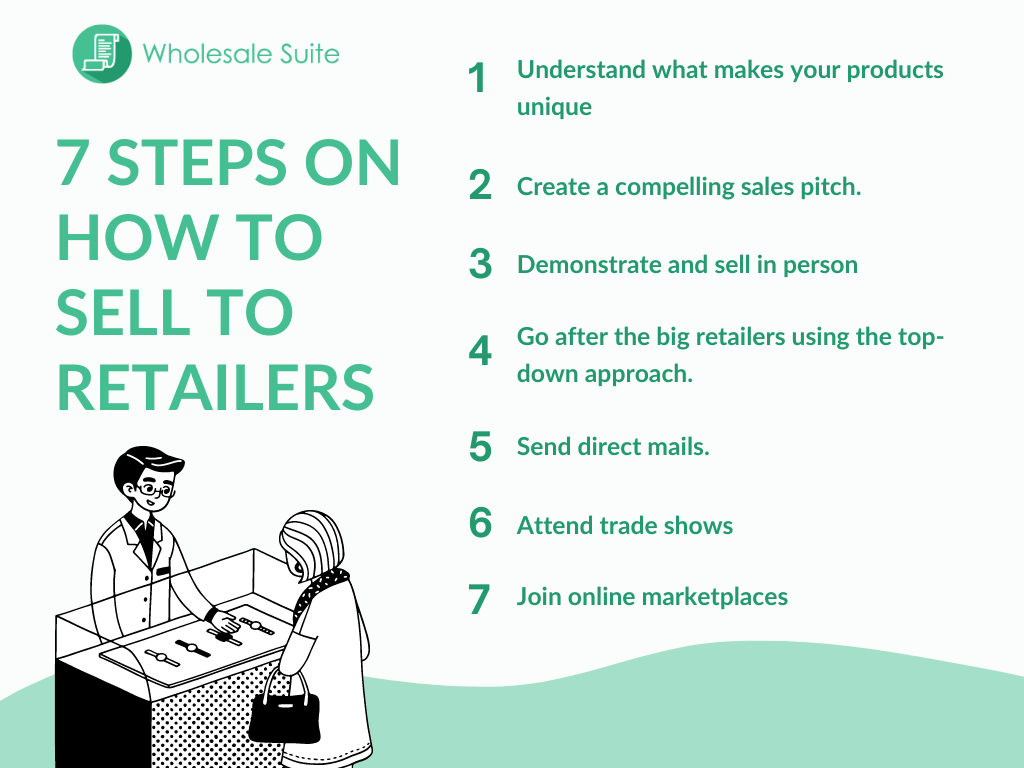
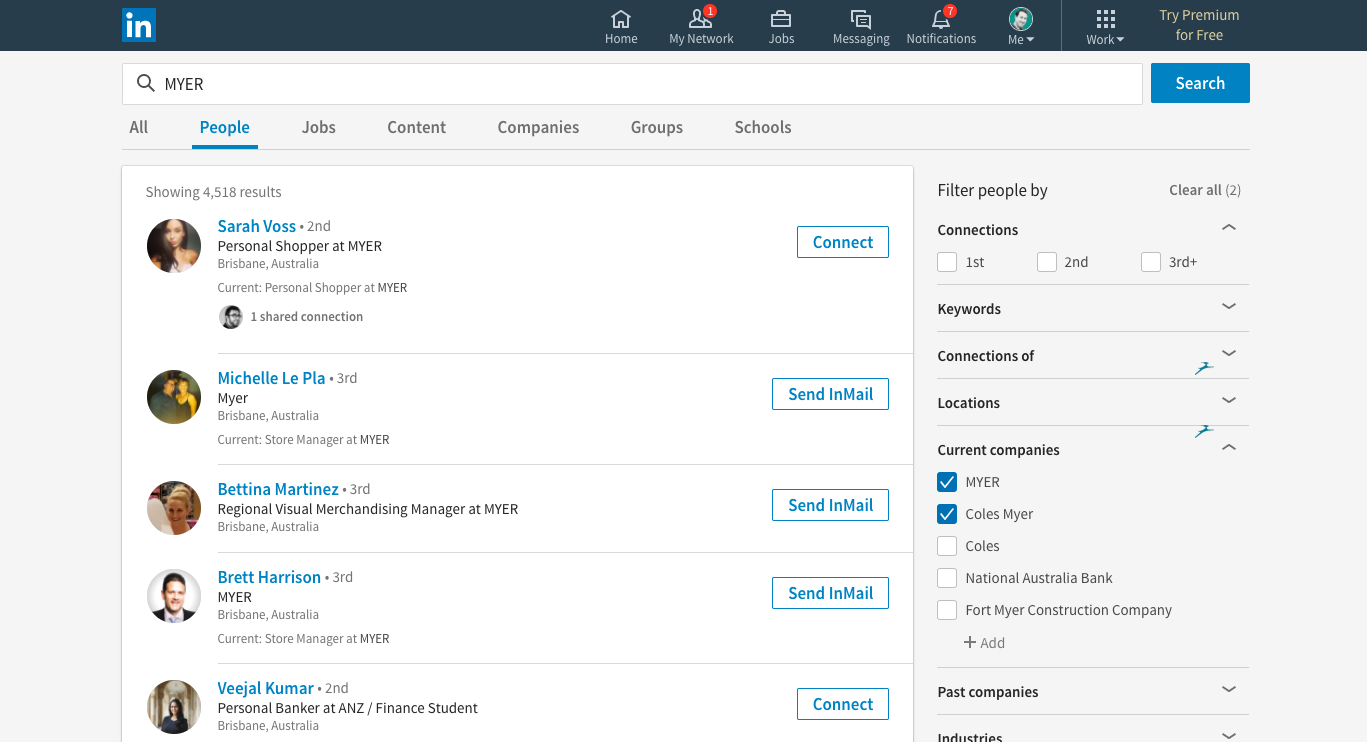
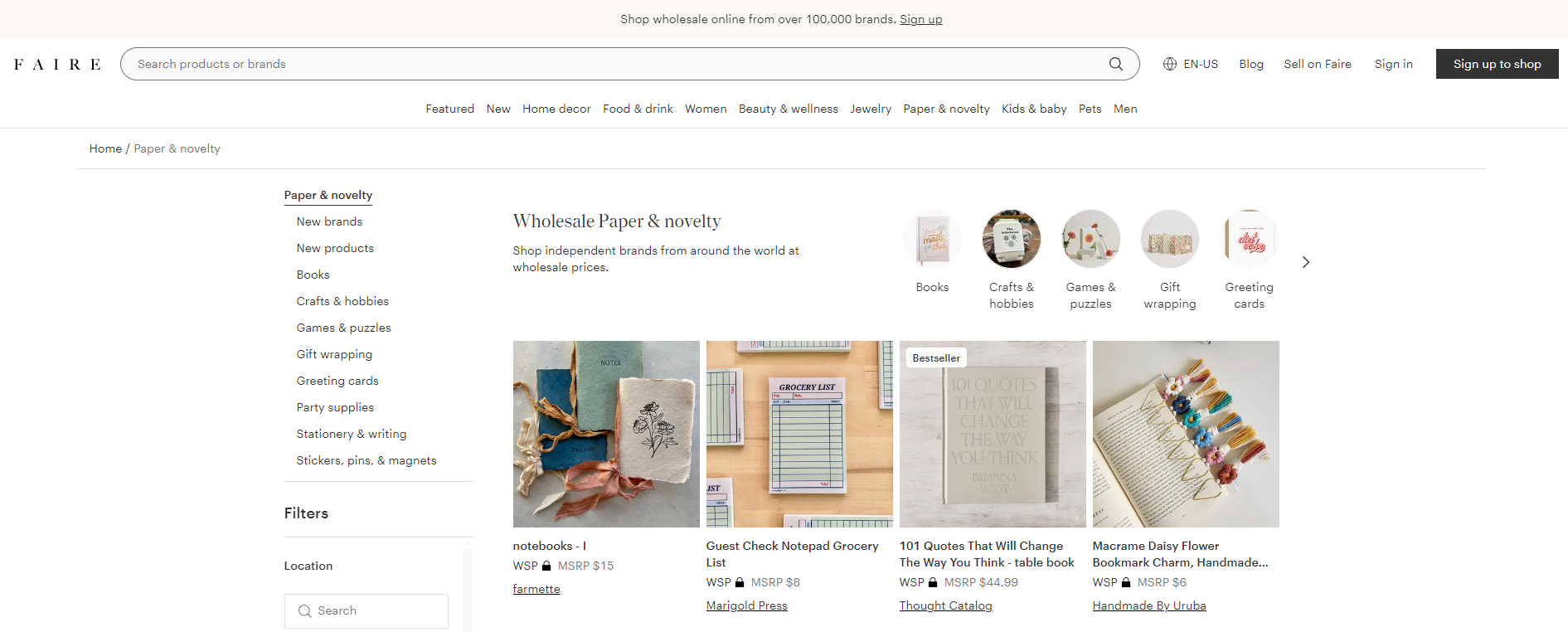

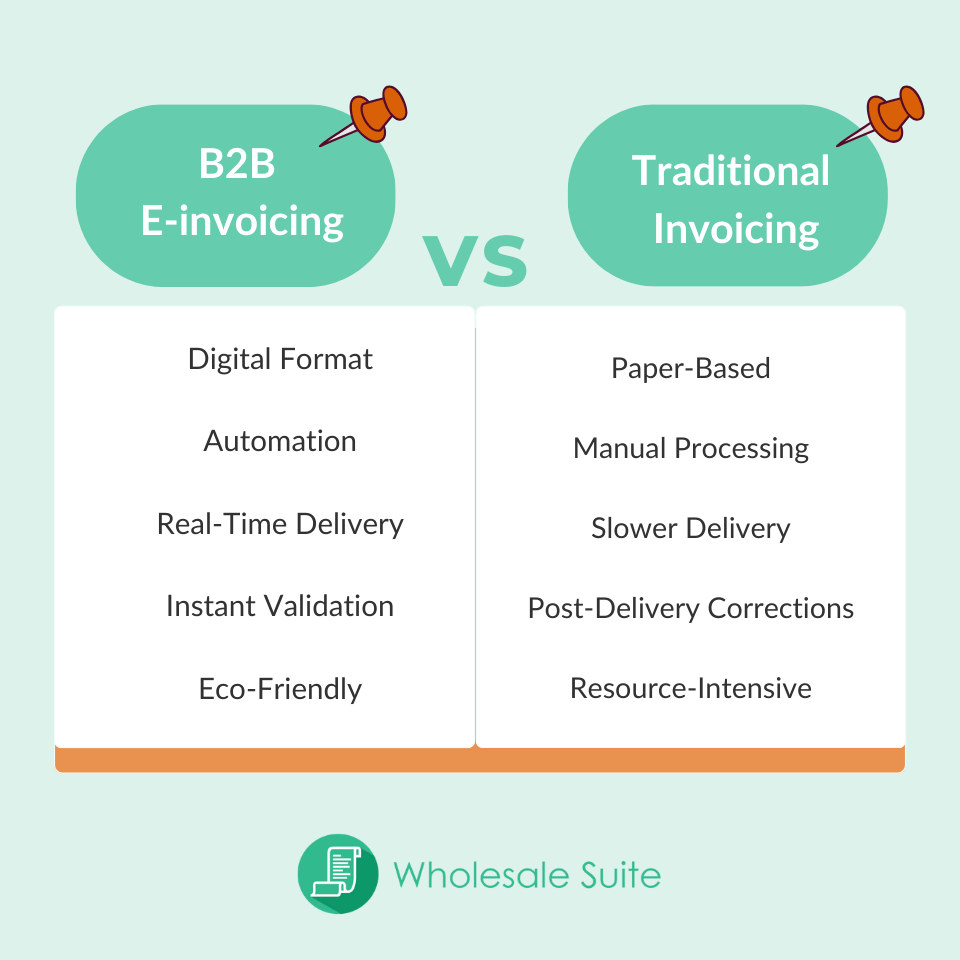
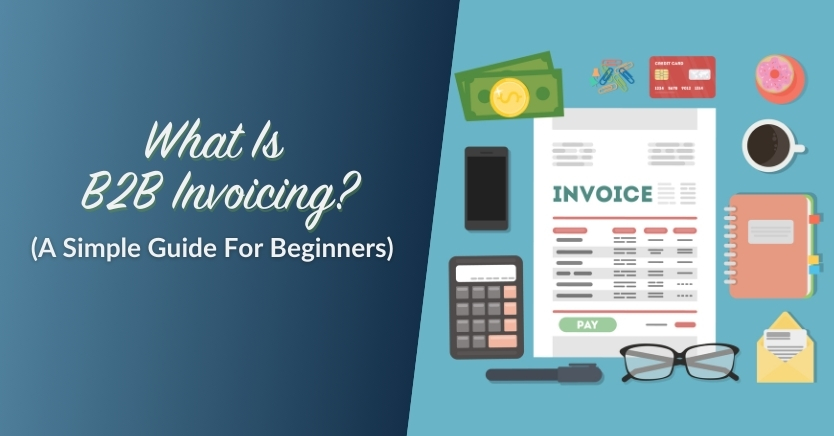
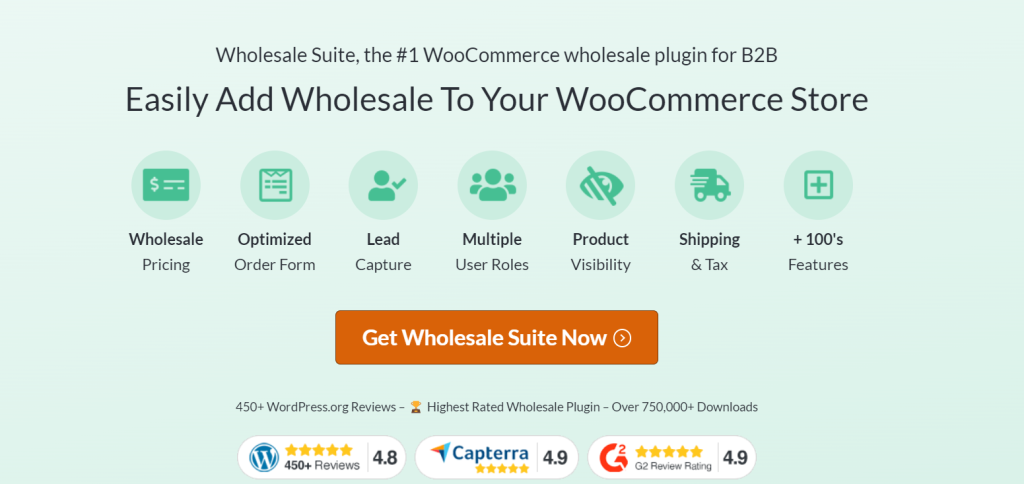



really helpful post. Great work, keep it up.
This is soooooo informative. Thank you so much.
Very educative
This was really helpful…thank you very much
Thank you very much for such information! I’ll now walk in very boldly to sell my product.
Başlangıç için Harika bir yol gosterici oldunuz teşekkürler
it was helpful cause i am starting a distribution company so i have learned a lot and i still want to learn more .
Hi,
I need to know how to approach business people by clothing product through telephone. Please help me with step by step it will be very helpful for me.
Hi Monica,
Plenty of great tips about it in the article above – you could also check out our comprehensive wholesale marketing guide.
What if they don’t give us their outlets for keeping our product? Even after it’s a well known product . And we pitched it really well!
Its great thank you
should i make an appointment or just turn up with my products.thanks Jan
If you can make appointments that definitely helps, Jan! Doing the extra research to make sure your products are a good fit is time well spent too.
Hi Josh, that post is really useful , I never seen so good advises on short statement: your site is the basic for everyone who start to sell new product. If it possible, can you please give some tip for to be NOT shy? My product is good, very attractive and useful in interior design business but the retailers are a bit retard (sorry…:o)) I will follow your posts, you are really helpful guy, thank you…:o)) Marta Brash The Nest Home Stager & Interior Design consultant (but now product-maker as well)
Thanks for the comment Marta, glad you found it helpful :)
Shyness is just something you have to set aside if you want to grow your business. I’m naturally introverted so I understand the situation.
Hope this helps!
Than you for this info I well definitely put this to use ,I love talking to people and trying to be that sales man, but I will push myself to the edge and jump if I have to get my brand out there. I will look up where they hold the trade shows and star approaching them also. again thank you for this if you don’t try you don’t know .
Good luck on the hustle Morris, you can do it!
Thanks for the great read! I never knew that starting a physical retail store is more expensive than starting an online retail store. If I were to expand my retail store, getting my friends and family spreading the word my store would help me get more customers. Also joining business organizations will be a plus as I can learn and teach tips and tricks to and from other business owners.
Great tips Tim, thanks for stopping by!
I still have not generated any sales would it be better to wait first before approaching retailers?
Depends how long you’ve been in operation, how mature your product is, etc. I would be looking very hard at your offer and traffic. If the traffic is not converting, why? If the offer is good, why aren’t people buying it? In short, personally I would focus on getting some sales first. It will be a great learning experience and information you can pass onto potential retailers when you do go to get them.
Hi.. good day.. ur site is very informative.. btw, would also like to to ask how much would be my mark up for my rtw clothings and empanada bread.. thanks
Hey AJ,
Check out our post on how to price wholesale products.
Aloha! Great information thank you kindly. My concerns are that I need to just send a one sentence email and wait for reply to submit my product kinda difficult for one sentence info to me any suggestions please
No reason you have to do just one sentence on your intro email. The shorter the better, but include what you have to so that it makes sense to the person. Hope this helps.
Hi, I opened a natural and organic skincare company a year ago. My website is Lkinsskincare.com I reach out to small local nature stores frequently to introduce my products by making an appointment. The store owner seems receptive to purchasing my products at first however I find when I call them back there not interested. I am getting great feedback from customers who have already purchased them but new customers seem to not want to purchase them because they are unfamiliar with the name. Any tips? I didn’t expect the marketing aspect to be easy but I am confident that I have premium products. Thanks Eileen
Hi Eileen,
Great work on your business thus far, you’re ahead of the pack. I know a few people who have built companies in the space and its always a hard slog in the beginning, hitting up little boutiques until you get a couple of big breaks into larger stores. Hang in there, you’re doing the process right and if you are getting some traction, try and find out what made that interaction successful and replicate.
I took a look at your products and while you said its positioned as a premium product, the prices are not in the premium bracket. I would consider raising your retail prices so you have more margin to afford more outreach. See here for a guide on pricing that might help.
Of course, please take this feedback with a grain of salt, I’m an armchair observer and you know your business best because you’re living it every day and know what your customers are saying. But from a consumer perspective, it doesn’t scream premium to me due to the pricing. Your packaging is nice and looks the part, and while your site could use a little more design work to bring that premium feeling home, but I wouldn’t invest any more there until you’re seeing some numbers.
Hope this helps in some way!
Would you have some examples of CTAs for Product Sell Sheets?
Well worth a read. Got great insights and information from your blog. Thanks.
Hi,
Thank you for the information. I have online store http://www.woodbrimhats.com. My products are premium and custom made. I want to target high end vendors. I started out doing one offs but now Im shifting to more bulk orders. I’ve made sales with good feedback but would like scale up. I would like to hire a sell rep to pitch my product to stores and boutiques. Do you have any advice for contacting sales rep or buyers?
Hello,
Thank you for this wonderful article! If I am thinking of pitching to a national retailer to do a pop up just for the holidays, how many pieces would you suggest I offer? I have a limited edition bow tie and pocket square line for the urban peacock: http://www.ruthnathans.com. Not sure if offering my entire collection is the best idea or just a couple of pieces and then offer to do a special designed line for them if they would like exclusivity. Thanks :-)
Hie I have have made my own mixed spices, my main concern is the nutritional content how do i go about it
It really helpull for beginners.
Thank you for the information! if someone wants to open a shop to experience their product, not for sale, so can you suggest any ideas or retailers who is doing like this. Thanks
Hi,
I would like some advice please.
After selling at a fair, I have been approached by two interior design shops to stock my art prints.
I now want to approach other similar shops with my work. However, I am aware the nature of lifestyle/home interior shops want unusual pieces that aren’t found everywhere. Whilst I can do some exclusives for shops, I want to roll out my main prints but don’t want to put anyone off knowing it’s sold elsewhere.
What do wholesalers do? Should I use a mile radius, so I could say you will be the only stockists in say 20 miles Etc?
Any advice would be much appreciated,
Thank you.
Hey Mel, with this kind of thing, I would say its only a problem when it becomes a problem. Most people just simply don’t care enough and the volumes probably won’t be high enough to cause an issue. But yes you could filter applications by geography and that’s a perfectly acceptable thing to do (and also a great way for you to build up your leads list!).
Thank you thank you thank you
It was very helpful
Hi Josh,
First of all, thank you so much for the useful tips. I also would like to get your opinion on Chain Store Guide websites. There are many websites offers a service to provide most up to date buyers list. These lists are very costly and I am questioning if I really need them, or if I can trust these lists. Seems like each retail stores have their own Supplier application process on their website. Not sure if my application will get lost between thousands of other suppliers.
What is your opinion?
I always prefer to make my own list, but depending on the reputation of the person selling the list it could be a shortcut.
This wos like on ur mark,get set,goooo.loved it,explanation wos like abc.learnt alot.get more information that I’ve bargain for.thanks alot.ur the best thing happen in 2020 thanks again.
Thanks Adrian, appreciate the kind words!
Hi Josh,
This was a great read and has me strongly reconsidering the dropshipping business model for my company. I’m in the process of launching an online boutique and I’ve been debating on whether to dropship, private label, or pitch to retail stores to carry my product.
Do you have any recommended resources on the process for distributing product to retailers after closing an agreement? I’m not a wholesaler myself; I order my products from other wholesalers and customize them.
Thanks for the kind words Zanea! How you distribute the products will vary greatly depending on the size of the retailer and how much you are sending them. I would suggest it would be a matter of outlining an ordering process with them and setting expectations about delivery. Hope this might help!
Alll the points are looking effective. It just the matter of time, once your product get in rotation and in demand retailers will automatically starts calling you for the supply. Yes but a proper start is a must. Thanks for the tips.
Thank you ! Very useful ! :)
You’re welcome Adigoni!
This was really helpful I learned a lot from that thank you
Great advice! Loved how you went over the breakdown of how to create a product demonstration and using the product sell sheet. There is definitely a time for ramp-up involved, I’ve given away lots of product for free, some don’t end up buying more, but others end up being major buyers. Thanks for the awesome info!
THANK YOU!! GREAT WORK
For beginners.. what and what would i need when meeting a retailer should I want to sale my product to on wholesale..
Highly recommend taking samples and an information pack should they want to order. Be prepared to sign them up on the spot.
good advice . It will beneficial to read for newbie .
Thanks to you for sharing with us .
Best,
Diana
Great article as always. Is there a best way to approach retailers for baked products (meat pies)?
Thanks Opal! I don’t have a lot of experience with expirable products but I imagine the outreach process would be similar. In fact, they may be even more open to approaches because they’re constantly trying new lines.
Wow this was extremely helpful! Thankyou so much this article actually makes me think I possibly could be onto an idea that may in fact eventually be marketable in actual shops ones day. I don’t know why but I really thought that was just thinking too big and not a realistic possibility.
I have a handmade jewellery line I am creating and believe I have a unique concept to go with that jewlery line, which could one day be broadened into a wider gift line. But I thought this really would only be possible to peddle at local markets.
Do you think there is a danger in cornering oneself at markets or if selective about the markets attending, does current sales help demonstrate to retail buyers customer interest in the product?
Is it necessary to be selective about markets attending?
I am very confused about how to price my product online as it is let alone selling wholesale.
I’m only just setting up – my gift line is Broken Things” on Facebook and Broken Thing.s on insta….. I’m still setting up my online shop. Would so appreciate guidance as am trying to move forward wisely.
Thanks for the amazing article, I’m going to take time to chew it over and let it compost in my brain.
Glad to hear you enjoyed the article Brydie!
Selecting markets to attend is something only you can answer. I’d just say find a way to measure the effectiveness of each and divide your time between the ones that are working and eliminate the ones that aren’t.
Surely showing proof of popularity is a good thing in any case. Collect testimonials, user generated content, etc and show case that to your potential wholesale customers.
This article might help: https://wholesalesuiteplugin.com/woocommerce-wholesale-registration-landing-page/
For the pricing, this article will definitely help you: https://wholesalesuiteplugin.com/wholesale-price-vs-retail-price/
Thanks Josh Kohlbach , words are too small for the value you add through your content, This is the best guide I have seen so far on the internet. How To Approach Retail Stores To Sell Your Product was easy to understand with comprehensive and easy explanation.
Thank you Robert. Appreciate you.
Thank you very much Josh, amazing Articel. One last question, if i need more advis is there a way to contact you? like a business email maybe.
And again thank you very much for the information
Cheers Louai – contact form is in the footer if you want to contact us :)
Quiet informative blog post
Thanks Yatishwar :)
this is very informative, thank you :)
Thanks for stopping by Andre, glad to liked the article!
Thanks for sharing !
You’re welcome, Patricia :)
A great and fantastic article and guide. My fears of being a new entrant into the supply business space have been mellowed.
Thanks so much.
That’s fantastic to hear Walter :) Glad this article helped!
Josh, I’m grateful for this beautiful revealing post. Thank you so much.
Best.
Felipo
Hi Josh,
A really helpful article, especially a newbie in the e-commerce space wanting to ultimately branch out in to the physical retail space. I just launched my website http://www.petitclay.com, I was recently on etsy and I figured having my website would legitimise my products when pitching to retailers for wholesale.
Other than the products themselves, what else should I be bringing with me to my pitch?
I.e. Should I include a whole sale order sheet? A letter talking about my brand?
Thank you in advanced.
100% all of the above. Don’t discount the idea that you might be able to get an initial order on the spot or signing them up on the spot.
Nicely summarized. Thank you!
You are very welcome Rahul :)
Thanks a lot for your efforts to putting this information above, It’s a good layout of the covering content ! To approach a retail stores always pitch them with latest updated Technology.
Great article, just frustrating I can’t get out to more retailers at this time (and that most can’t be open!) I look forward to implementing these strategies.
Definitely agree Craig, super frustrating that we can’t do more in-person strategies. Hope you can leverage a lot of the strategies here though, and sending samples is still a great method to get that in-person tactile thing happening with prospects! Would be great for your products!
Hi Josh,
so i told a ‘potential’ retailer that my wholesale price for my product was 15.00 – then communication stopped. this morning… i reached out and asked if they had the opportunity to look at my product as I never received any feedback. I also stated that the wholesale price could be ‘negotiated’ to 10.00 per piece. This was my first attempt to get into a shop with my product…so what the heck do I know? Now, I feel like I shot myself in the foot, because it looks like I dont have enough pride in my pieces. UGH! Help!
Hey Jackie, keep in mind its a marathon, not a sprint. Sometimes its better to just continue to find other retailers for your pipeline.
They might also have timelines/cycles that they buy on so you might need to give them some more time.
A couple of other things you can do:
1. Be consistent in following up, schedule a calendar reminder and follow up every month via phone until you get a ‘no’ or a ‘yes’.
2. Next time you speak to them, just tell them you’re excited to work with them and ask what it would take to have them place an order today – there might be unknown variables (there might be another decision maker that you aren’t aware of, they might have buying cycles, there could be cashflow issues, etc, etc). Once you know whats stopping them you can see if there’s a solution you can offer.
Hope this helps!
This is very informative. Thank you so much for an incredible read, keep up the good work!
Thanks Loque!
its very valuable information. Thank you for with us.
Its great thank you
Uzun vadeli planlar yapmanın ve mutlu olmanın tam zamanı.
Thanks for sharing this great information with us Josh. Specially the sample letter is really helpful for reaching out to the retailers.
Hi, I love the article! Can you please advise if I need to create a contract of sale to take to the retailer? Or do they provide a contract that I need to fulfill? I am only contacting major chain retailers. Also if they say no , how long do I wait before trying again?
Do I need to supply data of sales and repeat business or would a few customer reviews do?
Thanks
Hi Kathryn, if it’s a big retail chain, they generally make their own rules :D
Just ask them up front what the process is to be stocked by them and what information you have to provide.
With smaller retailers, moms and pops and smaller chains you can be the one in control and set the terms and agreements.
thank you for sharing for this wholesale approching guide, If anyone want to buy bulk spices online in good quality so you can explore vyomoverseas.com, They Export spices worldwide.
Good morning, there is some really interesting advice on here.
Could I please ask your opinion on the following:
Assuming I looked to sell a product wholesale to a major national retailer, I would look to also market the product through my own website, but I’m guessing the major retailer would look to limit my other routes of sale in any contract?, do you have any advice around this please? Thank you.
Hi Liz, it definitely depends on the retailer. Mostly, larger retailers will look to impose minimum sales numbers – this is to ensure it’s worth their while (otherwise they’ll find someone else that can meet those numbers). I would be surprised if they’d limit your other sales channels, but if they were asking for exclusive rights then thats either something you’d have to come to terms with as a business risk if you want to do business with them.
Hope this helps!
There are many websites that offer a service to provide the most up-to-date buyers list. These lists are very costly and I am questioning if I really need them, or if I can trust these lists.
Buying lists isn’t a good idea in 98% of cases. You’re always better to build your own list.
It is precious information. Thank you for with us.
Thanks Liza! Glad you found it useful :)
Thanks for sharing…
You’re welcome Emma!
Good Information, very helped
You’re welcome Pintu!
Thanks for sharing…
You are very welcome Hijyen :)
Great article on the different methods for approaching retail stores to sell your product! I especially liked the point about understanding the differences between selling to retailers and other customers. It’s so important to tailor your approach to each audience. I’m curious to know more about the author’s experience with direct mail. Have you found it to be an effective way to reach retail buyers? As a cycling and cycling accessories business owner in Australia, I’m always looking for new ways to get my products into stores. This article has given me some great ideas to consider.
Hey Olivia, great questions.
I have heard of many people having success with “lumpy mail” where you send an attention getting to open the door to a conversation.
I think it’s always worth trialing these sorts of things with your audience. For example, you could send a package to the decision maker and put a bicycle bell inside so it’s kind of weird shaped…
“Give me a ring if you’re wanting to stock our accessories” would be a fantastic attention grabber and conversation starter!
Thanks for sharing…
thank you